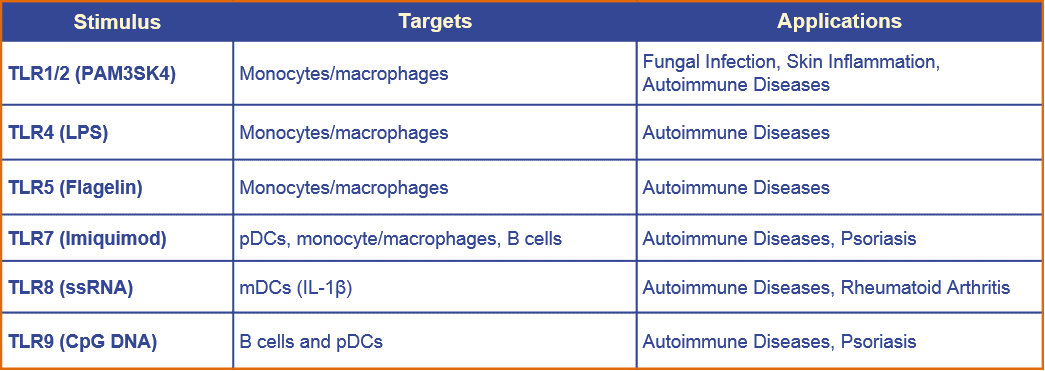In case you want to evaluate the compound’s immunomodulatory effect on TLR signaling under more stringent conditions then GBS can offer custom-tailored TLR-challenge assays based on PBMCs. In this scenario, primary PBMCs are freshly isolated from blood specimens and offer more long term culture possibilities.
TLR-specific biological response in PBMCs assay is triggered by application of TLR-specific ligands over defined incubation time. Subsequently, the testing product is applied for assessment of immunomodulatory effect on TLR- induced immune response in PBMCs.
By purification of specific immune cell subsets by immunoaffinity beads and subsequent downstream analysis for immune-activation status, cytokine/chemokine profiling, transcriptomics, proteomics, phosphorylation and mitochondrial status GBS offers to our clients a comprehensive insight of the mode of action of their product in immune cells in context of TLR activation.

Toll-like receptors (TLRs) 1, 2, 4, 5 and 6 are expressed on the cell surface, while TLRs 3, 7, 8 and 9 are expressed intracellularly on endosomal membranes. Activation of the TLRs leads to recruitment of the adaptor molecules MyD88, TIRAP, TRIF and TRAM. Downstream signals involve TAK1, MAPKs, TRAF3, TBK1 and IKKs, resulting in nuclear translocation of transcriptions factors (AP-1, NF-κB, IRF-3 or IRF-7) into the nucleus and transcription of inflammatory genes.
PBMCS MODELS

EXAMPLE DATA

Figure: Four plex cytokine profiling of the immunomodulating effect of Compound A on TLR8-mediated response in PBMCs
PBMCs of gender/age matched donors were isolated by density-centrifugation method and plated in 96-well plate. Cells were pre-treated with double-stranded DNA to trigger TLR-8 specific response. Compound A was applied for 6h and supernatant was collected and analyzed for IL-1β, IL-6, IL-8, and TNF-α.
The GBS models based on PBMCs are complementary with Xvi-Blood assays and can be used for:

